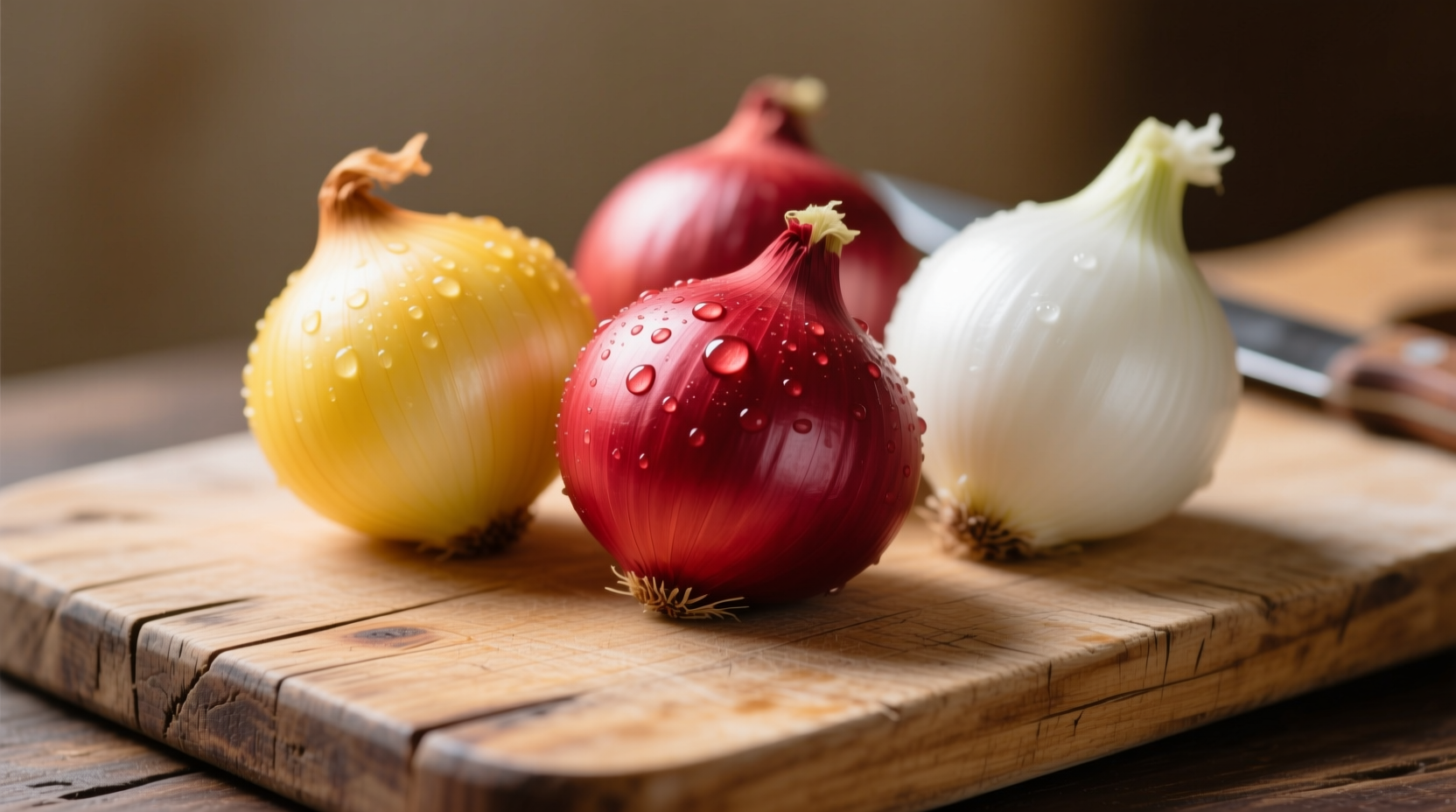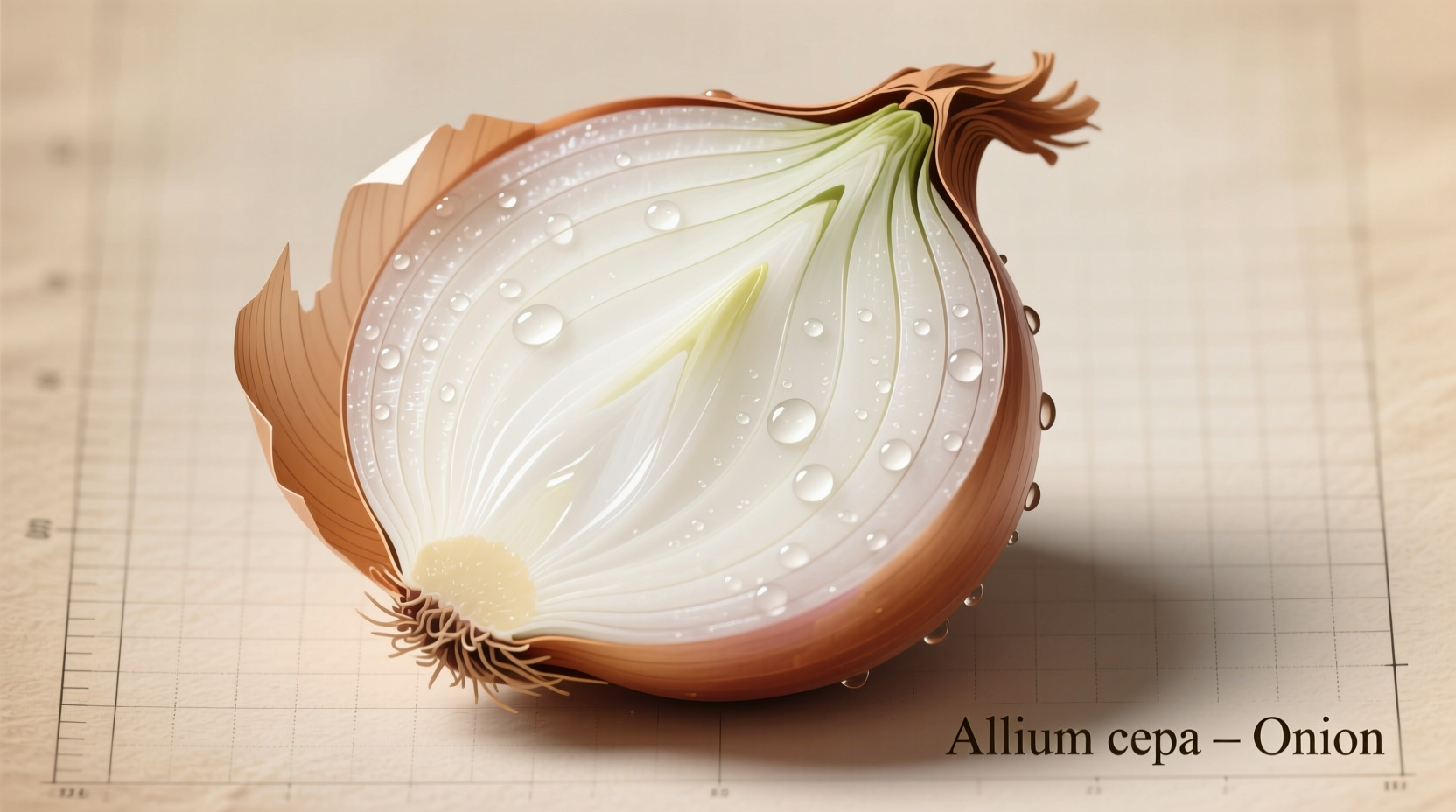An onion is a edible bulb from the Allium cepa plant, belonging to the lily family (Amaryllidaceae), characterized by layered concentric rings, a pungent aroma when cut, and over 600 cultivated varieties worldwide used extensively in global cuisines for both flavor and nutritional benefits.
Ever wondered why this humble kitchen staple makes you cry while transforming ordinary dishes into culinary masterpieces? Understanding what an onion truly is goes far beyond recognizing it as a common cooking ingredient. This comprehensive guide reveals the fascinating botanical reality, nutritional science, and culinary versatility of one of humanity's oldest cultivated vegetables.
The Botanical Reality of Onions
Scientifically classified as Allium cepa, onions are biennial plants grown as annuals for their edible bulbs. These bulbs form as modified leaf bases that store nutrients, creating the distinctive layered structure we recognize. The onion plant features hollow, bluish-green leaves that emerge from a short stem at the top of the bulb, with roots developing from the basal plate at the bottom.
Unlike common misconceptions, onions aren't roots but rather specialized storage organs called bulbs. This botanical distinction matters because it explains why onions can regenerate when planted—each layer contains the potential for new growth. The characteristic pungency comes from sulfur compounds like syn-propanethial-S-oxide, which forms when cell walls are broken during cutting, triggering that familiar eye-irritating reaction.
Physical Characteristics and Varieties
Onions display remarkable diversity in size, shape, color, and flavor intensity. The concentric layers we see when slicing an onion represent modified leaves that have become fleshy and filled with water and sugars. The outer dry, papery skin—technically dead tissue—protects the inner layers from moisture loss and physical damage.
| Variety Type | Color | Flavor Profile | Common Culinary Uses |
|---|---|---|---|
| Yellow Onions | Brown skin, white-yellow flesh | Strong, pungent when raw; sweet when cooked | General cooking, caramelizing, soups |
| Red Onions | Purple-red skin, white flesh with red rings | Sharp, slightly sweet | Salads, salsas, pickling, garnishes |
| White Onions | Tan skin, white flesh | Crisp, clean, slightly hotter | Mexican cuisine, fresh salsas, grilling |
| Sweet Onions | Light yellow skin, white flesh | Mild, sweet, low sulfur content | Raw applications, sandwiches, salads |
Nutritional Science Behind the Layers
According to USDA FoodData Central, a medium onion (110g) provides approximately 44 calories, 10g of carbohydrates, 2g of fiber, and significant amounts of vitamin C (11% of daily value), vitamin B6 (9%), and manganese (8%). The distinctive sulfur compounds that create onions' pungency also deliver notable health benefits.
Research published in the Journal of Agricultural and Food Chemistry confirms that onions contain quercetin, a flavonoid antioxidant with anti-inflammatory properties. The concentration varies by color—red onions contain up to 11 times more quercetin than white varieties. These compounds contribute to onions' documented benefits for cardiovascular health and blood sugar regulation.

Global Culinary Applications
Onions serve as the flavor foundation in virtually every major world cuisine. In French cooking, they form the "holy trinity" with carrots and celery in mirepoix. Indian cuisine uses onions as a base for countless curries and masalas. Mexican cooking features raw white onions in salsas and grilled applications. The Japanese create delicate onion rings through precise slicing techniques that maximize sweetness.
Professional chefs understand that different cooking methods transform onion chemistry: caramelization (Maillard reaction) creates complex sweetness at 140°C (284°F), while sweating preserves more of the sharp flavor profile. This versatility explains why onions appear in approximately 85% of global recipes according to culinary anthropologists at the University of Gastronomic Sciences.
Historical Significance and Cultivation
Archaeological evidence from Bronze Age settlements in China and Egypt confirms onion cultivation dating back at least 5,000 years. Ancient Egyptians revered onions for their spherical shape and concentric rings, symbolizing eternal life. They've been found in Egyptian tombs, including that of King Ramses IV, where onions were placed in the eye sockets of mummies.
The global spread of onions followed ancient trade routes—carried by traders along the Silk Road, introduced to the Americas by European colonists, and adapted to local conditions worldwide. Today, China, India, and Turkey lead global production, with over 95 million metric tons harvested annually according to FAO statistics.
Practical Selection and Storage Guidelines
When selecting onions, look for firm bulbs with dry, papery skins free from spots or sprouting. The neck should be tightly closed. Store whole onions in a cool, dark, well-ventilated place—never in plastic bags which trap moisture. Properly stored, yellow onions last 2-3 months, while red and white varieties keep for 1-2 months.
To minimize tears when cutting, chill onions for 30 minutes before slicing or cut under running water. Use a sharp knife to minimize cell damage. For maximum flavor preservation, cut onions crosswise through the layers rather than lengthwise. Leftover chopped onions keep for 7-10 days in airtight containers in the refrigerator.











 浙公网安备
33010002000092号
浙公网安备
33010002000092号 浙B2-20120091-4
浙B2-20120091-4